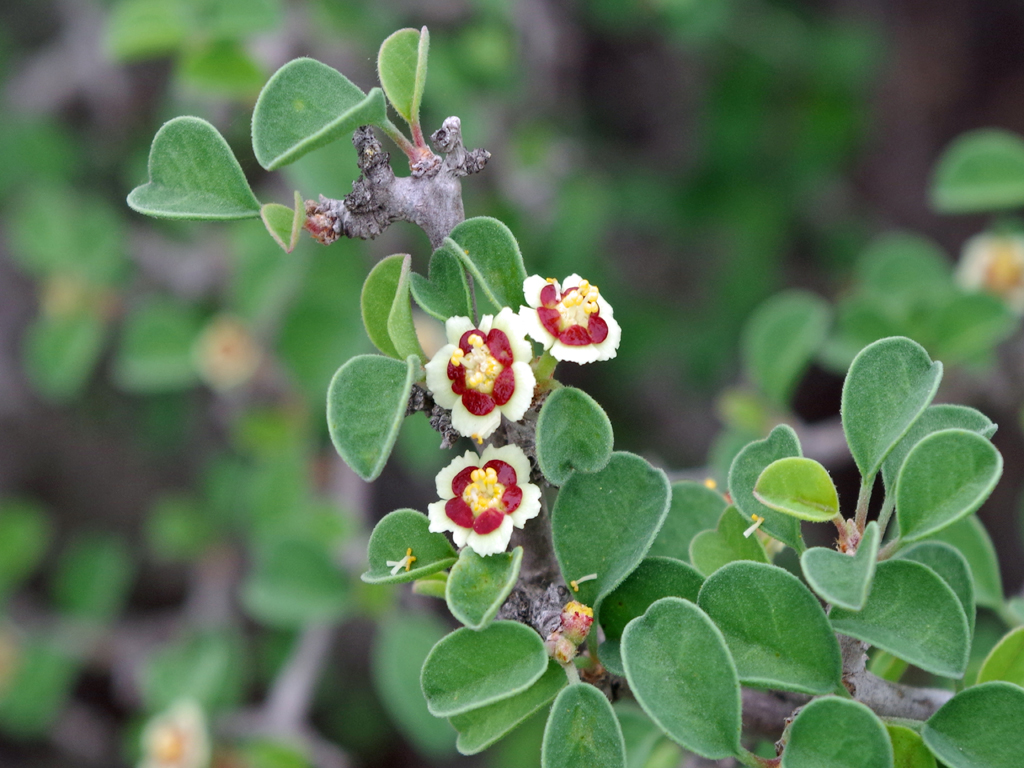
Cliff Spurge
Euphorbia misera
Euphorbia misera
Photo Credit: Patricia Gordon-Reedy
| Historically present | |
| Between 2000 and | |
| Last 10 years |
Goal: Maintain, enhance and restore coastal sage scrub on Conserved Lands in the MSPA that supports or has the potential to support VF species (i.e., cliff spurge, Palmer's goldenbush, San Diego barrel cactus, snake cholla, Blaineville's horned lizard, California gnatcatcher, San Diego black-tailed jackrabbit) and to incidentally benefit a diverse array of other species (e.g., San Diego thornmint, willowy monardella, Hermes copper, Quino checkerspot, coastal cactus wren) so that the vegetation community has high ecological integrity, and these species are resilient to environmental stochasticity, catastrophic disturbances and threats, such as very large wildfires, invasive plants and prolonged drought, and will be likely to persist over the long term (>100 years).
Management units: 1, 3, 6, 7
In 2021, inspect occurrences of coastal sage scrub MSP VF plant species (cliff spurge, Palmer's goldenbush, San Diego barrel cactus and snake cholla) on Conserved Lands using the regional IMG monitoring protocol to record abundance and collect habitat and threat covariate data to determine management needs.
| Action | Statement | Action status | Projects |
|---|---|---|---|
| IMP-1 | Based upon occurrence status and threats, determine management needs including whether routine management or more intensive management is warranted. | on hold | |
| IMP-2 | Submit project metadata, monitoring datasets and management recommendations to the MSP Web Portal. | on hold |
| Criteria | Deadline year |
|---|---|
| Surveys Completed 2021 with Management Recommendations | 2021 |
| Threat Name | Threat Code |
|---|---|
| Altered fire regime | ALTFIR |
| Human uses of the Preserves | HUMUSE |
| Invasive plants | INVPLA |
| Urban development | URBDEV |
| File name | Lead Author | Year | Type |
|---|---|---|---|
| Habitat Management Plan for the Kelly Ranch Habitat Conservation Area | 2002 | report | |
| MSP Roadmap Dec 31, 2016: VF Species and Vegetation Goals, Objectives, and Actions | San Diego Management and Monitoring Program | 2016 | other |
Coastal areas of north-western Mexico and south-western US. Occurs from Santa Barbara to San Diego in California and Baja California, Baja California Sur, and Sonora in Mexico [1]. Also found on southern Channel Islands and several islands in Mexico.
Eight occurrences on Conserved Lands in MUs 1 (Tijuana River Valley Regional Park), 3 (City of Chula Vista Central City Preserve, Dennery Canyon, Furby-North Property, Spring Canyon), 6 (Kelly Ranch Habitat Conservation Area), and 7 (Torrey Pines Glider Port).
None [2].
Rocky and xeric scrub habitats including coastal bluff scrub, coastal scrub, Mojavean desert scrub, and maritime succulent scrub [1, 2]. Elevation range 10-500 meters [1]. Found in association with genera Bergerocactus, Ferrocactus, Mammillaria, and shrubs Artemisia californica, Cneoridium dumosum, and Eriogonum fasciculatum [3].
Euphorbacieae family [2].
Slow growing perennial shrub [2, 4].
Bloom period is December-August [1].
Pollinated by insects [5; cited from 1]. Seeds presumed to be self-dispersed [1].
Nonnative species [2] and habitat destruction due to coastal development and erosion from road construction [6]. Additional threats from trail building, sand and gravel mining, off-road vehicle use, and trash dumping.
Grows readily from seed and cuttings [7, 8; cited from 1]. Seeds are easily harvested by collecting ripened fruit and storing [9].
[1] Convention on International Trade in Endangered Species of Wild Fauna and Flora. 2013. “Consideration of Proposals for Amendment of Appendices I and II.†Sixteenth Meeting of the Conference of the Parties, 1–10.
[2] CNPS, Rare Plant Program. 2016. Inventory of Rare and Endangered Plants (online edition, v8-02). California Native Plant Society, Sacramento, CA. http://www.rareplants.cnps.org, accessed 01 September 2016.
[3] Bittman, R. 2008 in litt. Botanist, Natural Diversity Database, California Department of Fish and Game (DFG). Sacramento, California. E-mail to DSA 10/01/2008.
[4] Roberts, F.M. 2009 in litt. Rare Plant Coordinator, Orange County and San Diego Chapters of the California Native Plant Society. Oceanside, California. E-mails to DSA 3/22 and 3/30/2009.
[5] Crepet, W.L. 1983. “The Role of Insect Pollination in the Evolution of the Angiosperms.†In Pollination Biology, 29–50.
[6] California DFG (Department of Fish and Game). 2009. Euphorbia misera Occurrence Data, unpublished. California DFG-Natural Diversity Database. Sacramento, California.
[7] Millspaugh, C.F. 1917. “Trichosterigma Benedictum.†Addisonia 2 (1): 3–4.
[8] Schwartz, H., and R. LaFon. 1983. “Euphorbia Misera.†The Euphorbia Journal 1. Mill Valley, CA: Strawberry Press: 93.
[9] Dave’s Garden. 2009. “Euphorbia Misera Propagation Guide.†Waltham, MA. davesgarden.com/guides/pf/go/101946/.